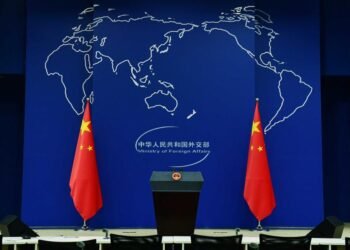WUZHEN, Nov 24: “Over the past two decades, China’s intellectual property landscape has undergone a dramatic transformation from a recipient of foreign technology to one of the world’s leading innovators, filing the highest number of AI-related patent applications globally,” Francis Gurry, former Director General of the World Intellectual Property Organization (WIPO) said in an interview with China Economic Net.
According to a recent WIPO report, of the 54,000 invention patents related to generative artificial intelligence applied worldwide between 2014 and 2023, China accounted for more than 70%, far surpassing runner-up the United States, which recorded 6,276 patents.
Gurry attributed it firstly to China’s massive investment in science and technology.
“Indicators don’t lie. The most number of peer-reviewed science and technology articles in the world are published by Chinese nationals. The amount of money invested in AI research and development by China is second only to the U.S.,” he said.
Data from science analytics company Clarivate shows that China surpassed America and the EU in 2022 in the number of high-impact papers. International Data Corporation (IDC) estimated that by 2027, the total investment of China’s artificial intelligence will exceed USD 40 billion, with a compound annual growth rate of 25.6%.
Gurry also mentioned China’s matured intellectual property system with a comprehensive framework supporting innovation across various sectors, from high-tech industries to pharmaceuticals.
For instance, the establishment of specialized IP courts in major cities such as Beijing, Shanghai, and Shenzhen has streamlined patent dispute resolutions, fueling innovation by protecting innovators’ rights. According to the 2024 World Artificial Intelligence Legal Blue Book released earlier this year, there are currently 1,328 AI large models worldwide, with the US leading at 44% and China at 36%.
These inventions have translated into industrial applications. According to China Internet Development Report 2024 published Thursday at the World Internet Conference, AI has been deeply integrated with China’s industries. Among the nearly ten thousand digital workshops and smart factories set up in the country, 421 have grown into national-level intelligent manufacturing demonstration factories, over 90 percent of which apply artificial intelligence and digital twin technologies. According to China’s Ministry of Industry and Information Technology, 72 Chinese enterprises have been selected as global lighthouse factories, accounting for 42% of the world’s total.
“China is transitioning from a manufacturing-based economy to one driven by knowledge and technology, which has been significantly fueled by its focus on intellectual property. This transition is evidenced by its burgeoning tech giants, such as Huawei, Tencent, and Alibaba, which have leveraged IP to secure competitive advantages in global markets,” Gurry observed.
As the biggest user of the WIPO systems, including trademarks, patents, designs, etc., China also plays a critical role in the global IP system.
Last month, 2024 International Association for the Protection of Intellectual Property (AIPPI) World Congress was held in Hangzhou, the first time for this 127-year-old organization to hold its IP congress in China. As of September this year, China has established stable IP cooperation with more than 80 countries and regions around the world, with more than 200 IP agreements being implemented.
“China’s growing influence at WIPO and other international IP organizations reflects its commitment to ensuring that global IP policies are balanced and fair to both developed and developing nations,” Gurry remarked, pointing out that China’s increasing involvement in harmonizing global patent systems is essential for the future of cross-border innovation.























